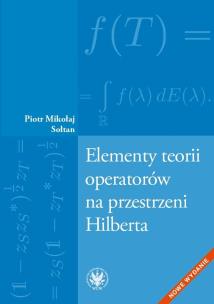- Regulamin
- Koszty dostawy
- Kontakt
- Dziś w ofercie 241 995 produktów
KSIĄŻKI
- Albumy
- Beletrystyka
- Biografie
- Dla dzieci i młodzieży
- Edukacja
- Ekonomia i biznes
- Ezoteryka
- Historia
- Informatyka
- Kalendarze
- Komiksy
- Kryminał i sensacja
- Kultura i sztuka
- Literatura faktu
- Literatura kobieca
- Literatura piękna
- Medycyna
- Nauka języków obcych
- Nauki humanistyczne
- Nauki przyrodnicze
- Nauki ścisłe
- Podręczniki
- Poradniki
- Prawo i administracja
- Przewodniki i podróże
- Psychologia
- Religia
- Sport
- Technika
- Zdrowie i uroda
ZABAWKI
- Artykuły dla niemowląt
- Bączki
- Bujaki i skoczki
- Ciągnij / pchaj
- Dla niemowlaka
- Grzechotki i gryzaki
- Karuzele i pozytywki
- Maty i centra zabaw
- Projektory i lampki
- Sortery i piramidki
- Zabawki
- Edukacyjne i kreatywne
- Figurki
- Klocki
- Lalki
- Pojazdy
- Pluszaki i maskotki
- Sport i rekreacja
- Zabawa w dom
- Zabawki drewniane
- Puzzle
- Do 200 elementów
- 201-500 elementów
- 501-1000 elementów
- Ponad 1000 elementów
- Puzzle 3D
ART. PAP
- Artykuły biurowe
- Artykuły piśmiennicze
- Bloczki i kartki samoprzylepne
- Dziurkacze
- Kalkulatory
- Nożyczki i nożyki
- Skoroszyty
- Teczki
- Wizytowniki
- Zszywacze
- Artykuły szkolne
- Akcesoria szkolne
- Modelowanie
- Notatniki i zeszyty
- Piórniki
- Plecaki i torby
- Pojemniki na śniadanie
- Pomoce naukowe
- Przybory matematyczne
- Przybory rysunkowe
- Upominki i gadżety
- Akcesoria do książek
- Artykuły balowe
- Breloki i zawieszki
- Drobiazgi, różności
- Kubki
- Oferta Świąteczna
- Papeteria, kartki i naklejki
- Skarpetki Many Mornings
- Upominki
GRY
MULTIMEDIA
- Audiobooki
- Beletrystyka
- Biografie i wspomnienia
- Dla dzieci i młodzieży
- Fantastyka
- Filozofia i religia
- Historia
- Literatura faktu i reportaż
- Poradniki
- Sensacja i kryminał
- Filmy DVD/BD
- Animowane
- Biograficzne
- Fantasy
- Horrory
- Komedie
- Romanse
- Science Fiction
- Sensacyjne / kino akcji
- Thrillery
- Muzyka CD
- Alternatywna
- Blues
- Dla dzieci
- Jazz
- Klasyczna
- Piosenka aktorska i poetycka
- Pop
- Rock
- Świąteczna i kolędy
- Akcesoria GSM
- Głośniki
- Kable i adaptery
- Klawiatury
- Myszy
- Słuchawki
PROMOCJE
ZDROWIE
LEGO

Elementy teorii operatorów na przestrzeni Hilberta
Autor: Sołtan Mikołaj Piotr
ISBN:
978-83-235-3406-8
EAN:
9788323534068
oprawa:
miękka
format:
235x165x10mm
język:
polski
liczba stron:
184
rok wydania:
2018
(0) Sprawdź recenzje
Opis produktu
Zasady bezpieczeństwa
Zwięzły wykład podstawowych zagadnień teorii operatorów na przestrzeniach Hilberta. Wśród omówionych tematów znajdują się: rachunek funkcyjny i twierdzenia spektralne, operatory zwarte, śladowe i Hilberta-Schmidta, samosprzężone rozszerzenia operatorów symetrycznych oraz jednoparametrowe grupy operatorów.
Dyskusja operatorów nieograniczonych oparta jest w znacznej mierze na narzędziu z teorii algebr operatorów – tak zwanej z-transformacie, która pozwala zakodować skomplikowane informacje o operatorach nieograniczonych w operatorach ograniczonych, dając w ten sposób możliwość uniknięcia wielu problemów technicznych. Publikacja przeznaczona jest dla studentów matematyki i fizyki oraz dla naukowców z tych dziedzin.
Przedstawiony wykład zakłada podstawową wiedzę z analizy matematycznej i algebry, a także z teorii funkcji analitycznych i podstaw analizy funkcjonalnej oraz teorii przestrzeni Hilberta.
Każdy rozdział kończą syntetyczne notatki ze źródłami zadań i przykładów oraz z możliwymi drogami dalszego rozwoju teorii.
Elements of the Theory of Operators on Hilbert Space
The book provides a concise and self-contained exposition of introductory topics in the theory of operators on Hilbert spaces. The topics covered include functional calculus and various versions of spectral theorems both for bounded and unbounded operators, compact operators, the trace and trace-class and Hilbert-Schmidt operators, selfadjoint extensions of symmetric operators and one-parameter groups of unitary operators.
The treatment of unbounded operators is largely based on a tool from theory of operator algebras, the so called z-transform. The transform makes it possible to encode complicated information about unbounded operators by bounded ones and thus avoid many intricacies of standard approach.
The book is intended for students of mathematics and physics as well as scientists working in those areas. Prerequisites include basic knowledge of analysis, algebra, measure theory as well as analytic functions and rudiments of functional analysis and Hilbert spaces.
Each chapter ends with a brief note indicating sources for examples, exercise problems and further developments of the theory.
CENA:
20,47
zł
Cena detaliczna:
29,00 zł
29%
rabatu
Najniższa cena z ostatnich 30 dni: 20,47 zł
Produkt niedostępny
Uwaga!!!
Ten produkt jest zapowiedzią. Realizacja Twojego zamówienia ulegnie przez to wydłużeniu do czasu premiery tej pozycji. Czy chcesz dodać ten produkt do koszyka?


Wybierz wariant produktu
